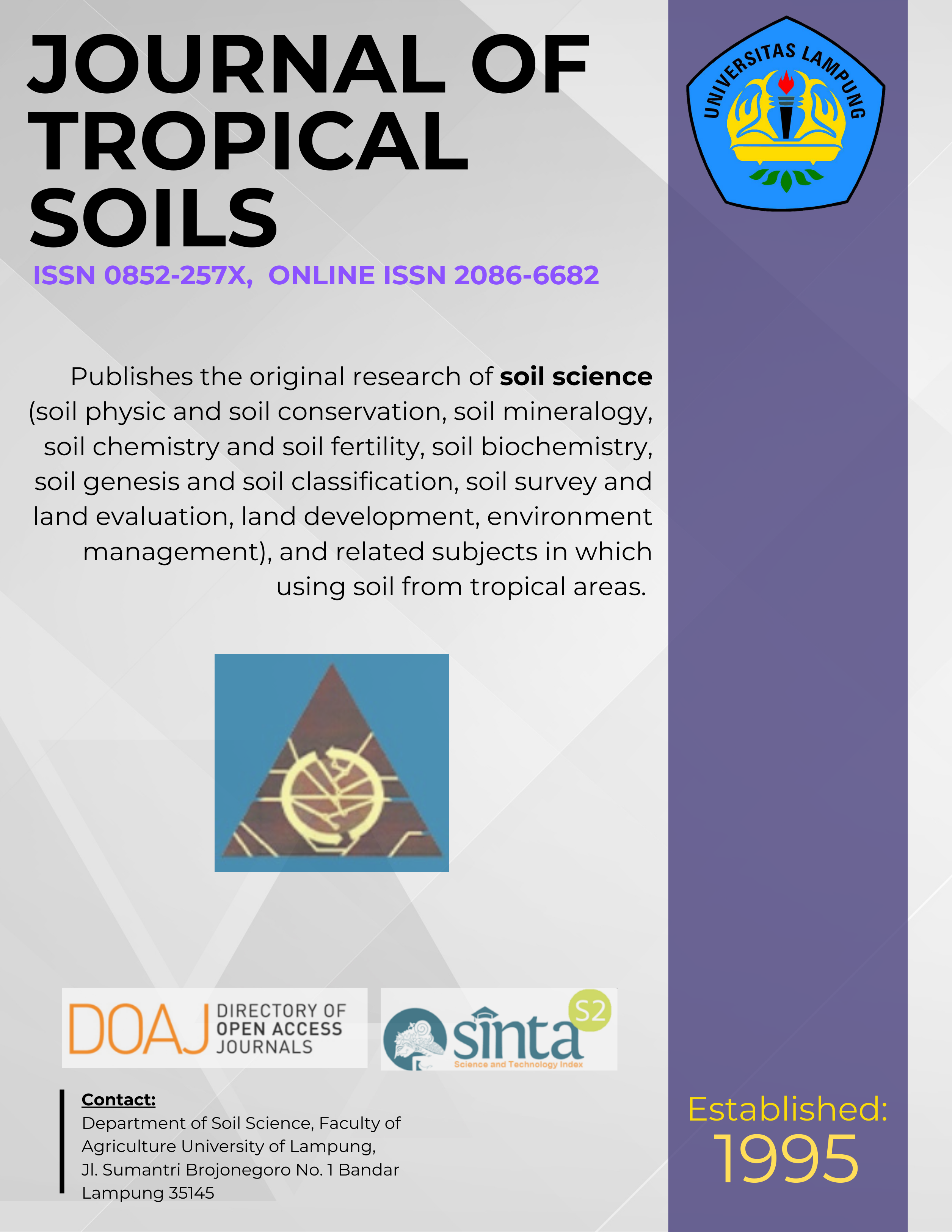Phosphate Adsorption Capacity and Organic Matter Effect on Dynamics of P Availability in Upland Ultisol and Lowland Inceptisol
Main Article Content
Abstract
Ultisols and Inceptisols were used to investigate the adsorption-desorption capacity of P and the effect of organic matter on the dynamics of P availability in tropical acid soils. The experiment consisted of two sub-experiments. Sub-experiment I was to study the adsorption-desorption capacity of Ultisols, Fresh-water lowland Inceptisols, and tidal-swamp Inceptisols. Therefore, surface soils (0 to 30 cm) of each tested soil were treated with 0, 10, 20, 30, 40, 60, 80, 100, 120, 140, 170, and 200 mg P kg-1 of soil. Sub-experiment II was to study the effects of organic matter
application (0, 5, 10, and 15 Mg ha-1) on the dynamics of available P following 60d incubation under room temperature.
P fertilizer application significantly affected water soluble-P (WSP) (p<0.01) and soil available P-Bray and Kurtz No. 1 (BKP) (p<0.01) in the three tested soils. The different response of both WSP and BKP confirmed that the soils tested in the current experiment had different soil P buffering capacity in the order of Tidal-lowland
Inceptisol>Upland Ultisol>fresh-water Lowland Inceptisol. OM application increased the BKP in all tested soils as compared to the control. Differences in pattern of soil available P dynamics over time were detected between upland soil and two lowland soils used in the current experiment.
Keywords: Adsorption-desorption, Inceptisols, organic matter, Ultisols
Downloads
Article Details
Issue
Section
License for Authors
Authors who publish with this journal agree to the following terms:
- Authors retain copyright and grant the journal right of first publication with the work simultaneously licensed under a Creative Commons Attribution License that allows others to share the work with an acknowledgement of the work's authorship and initial publication in this journal.
- Authors are able to enter into separate, additional contractual arrangements for the non-exclusive distribution of the journal's published version of the work (e.g., post it to an institutional repository or publish it in a book), with an acknowledgement of its initial publication in this journal.
- Authors are permitted and encouraged to post their work online (e.g., in institutional repositories or on their website) prior to and during the submission process, as it can lead to productive exchanges, as well as earlier and greater citation of published work (See The Effect of Open Access).
License for Regular Users
Other regular users who want to cite, distribute, remix, tweak, and build upon author’s works, even for commercial purposes, should acknowledge the work’s authorship and initial publication in this journal, licensed under a Creative Commons Attribution License.

